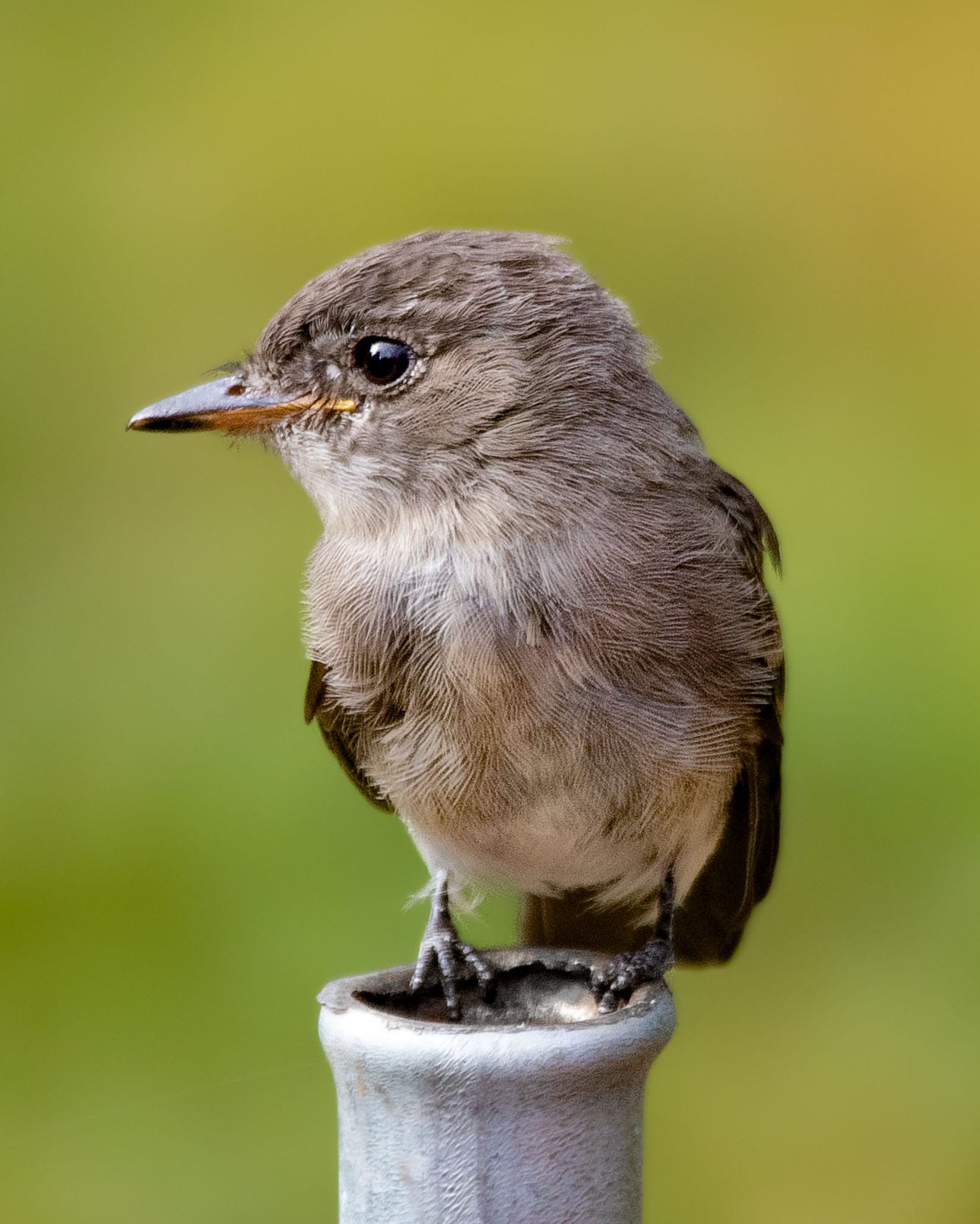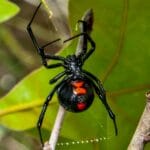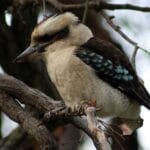The Western Wood-Pewee ( Contopus sordidulus ), a master of aerial deception, fills western woodlands with its melancholic, descending whistle, a quintessential sound of hot summer days. This unassuming bird, a subtle beauty in shades of gray and brown, plays a crucial role in maintaining the delicate balance of its forest home.
A Case of Mistaken Identity: Distinguishing Whispers
Often mistaken for its eastern cousin, the Western Wood-Pewee can be distinguished by its range and subtle song variations, requiring a keen ear and careful observation. While visually similar, their songs reveal their true identities. Imagine the Eastern Wood-Pewee singing a clear, three-part harmony – “peeey-ya-weeey” – while the Western Wood-Pewee whistles a more laid-back, drawn-out tune: “pzzzzeeyeer.” It’s like the difference between a crisp announcement and a thoughtful sigh.
Distinguishing Whispers: Decoding the Subtle Language of Wood-Pewees
Location, Location, Location
Knowing where you are plays a crucial role in identification. As its name suggests, the Western Wood-Pewee inhabits shady forests west of the Rocky Mountains, while the Eastern Wood-Pewee sticks to the eastern half of the continent. However, a slim sliver of land exists where their ranges overlap, creating a melting pot of birdsong that requires a keen ear to decipher.
Beyond the Song: Subtle Clues
Even if their songs have you stumped, subtle visual cues can aid in identification. The Western Wood-Pewee tends to be slightly darker overall, with less defined wing bars. Think of it like trying to tell apart identical twins – you have to pay attention to the small details.
The Flying Foodie: Diet and Feeding Behavior
Don’t let its small size fool you; the Western Wood-Pewee is a true aerial predator! This remarkable bird employs a unique hunting technique known as “sallying.” Perched upright on a high branch, it patiently scans the skies for its next meal. Once an insect is spotted, it launches into the air with astonishing speed and agility, snapping up its prey mid-flight with an audible click of its beak. Talk about impressive multitasking!
Home Sweet (and Shrinking) Habitat: Conservation Concerns
The Western Wood-Pewee makes its home in open woodlands, along forest edges, and in areas with scattered trees. Sadly, these habitats are facing growing threats from deforestation, habitat fragmentation, and climate change. These factors make it increasingly challenging for our feathered friend to find safe and suitable places to nest and forage.
Pesticides: A Silent Threat
The overuse of pesticides poses a significant danger to this aerial insectivore. These chemicals can disrupt the delicate food chain, reducing the number of insects available for the pewee to consume. It’s like taking away its grocery store!
From Canopy to Cloud Forest: An Epic Migration
As summer fades into fall, the Western Wood-Pewee embarks on an epic migration, trading its breeding grounds in the canopy for the lush embrace of tropical cloud forests in Central and South America. This incredible journey, spanning thousands of miles, is a testament to the bird’s endurance and navigational prowess.
From Canopy to Cloud Forest: Unveiling the Secrets of the Western Wood-Pewee
Mysteries of Migration: Unraveling the Unknown
While we know the Western Wood-Pewee migrates to cloud forests, the specifics of its wintering locations and behaviors remain largely a mystery. Scientists believe they likely use a combination of navigational cues, including the stars, the Earth’s magnetic field, and landmarks. Further research and citizen science initiatives, such as eBird, are crucial to unraveling the mysteries of their migratory journeys.
Silent Forest Sentinels: Harbingers of Habitat Health
Drab plumage belies the Western Wood-Pewee’s vital role in forest ecosystems, where it diligently controls insect populations, making it a welcome ally for both nature and humans. These “Silent Forest Sentinels” act as indicators of environmental health. Their presence suggests a balanced ecosystem, while their decline can signal habitat degradation or other ecological disturbances.
Unveiling the “Silent Forest Sentinels”: Western Wood-Pewees
Western Wood-Pewee Conservation: How You Can Help
Protecting the Western Wood-Pewee and ensuring its melodious song continues to grace our forests is a collective effort. Here are some practical steps you can take:
- Support Sustainable Forestry: Choose certified wood products to ensure responsible forest management.
- Reduce Pesticide Use: Opt for natural pest control methods in your yard and garden.
- Create Bird-Friendly Habitats: Plant native trees and shrubs that provide food and shelter.
- Become a Citizen Scientist: Contribute to bird monitoring programs like eBird to help track populations.
- Support Conservation Organizations: Donate or volunteer to organizations dedicated to protecting birds and their habitats.
Western Wood-Pewee Conservation: How You Can Help
A Call to Action: Ensuring a Future for the “Pee-wee”
The Western Wood-Pewee’s haunting song, a characteristic sound of western woodlands, reminds us of the interconnectedness of nature and the importance of conservation. By understanding the threats they face and taking action to protect them, we can ensure that their subtle beauty and melancholic calls continue to enchant generations to come.
















